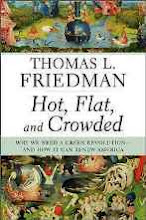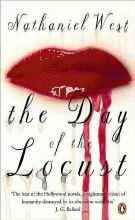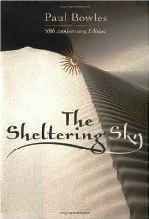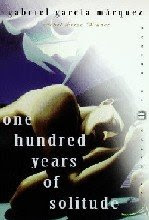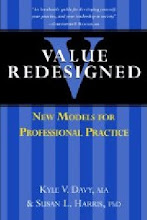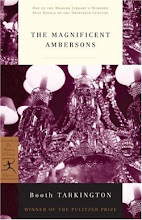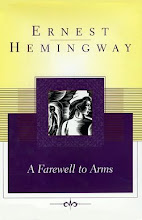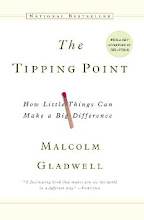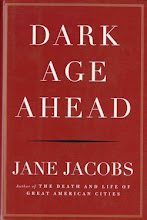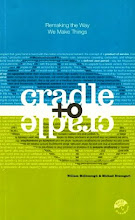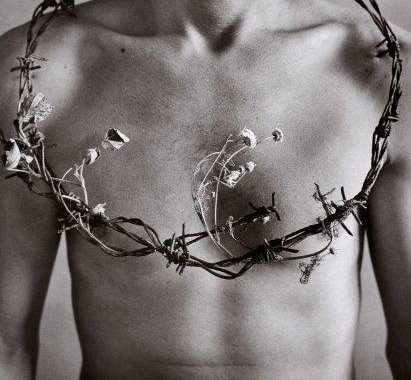20070422
20070408
Four Horsemen of the Apocalypse Stand before Us

“And I saw when the Lamb opened one of the seals, and I heard, as it were the noise of thunder, one of the four beasts saying, Come and see.
And I saw, and behold a white horse: and he that sat on him had a bow; and a crown was given unto him: and he went forth conquering, and to conquer.
And when he had opened the second seal, I heard the second beast say, Come and see.
And there went out another horse that was red: and power was given to him that sat thereon to take peace from the earth, and that they should kill one another: and there was given unto him a great sword.
And when he had opened the third seal, I heard the third beast say, Come and see. And I beheld, and saw a black horse; and he that sat on him had a pair of scales in his hand.
And I heard a voice in the midst of the four beasts say, A measure of wheat for a penny, and three measures of barley for a penny; and see thou hurt not the oil and the wine.
And when he had opened the fourth seal, I heard the voice of the fourth beast say, Come and see.
And I looked, and behold a pale horse: and his name that sat on him was Death, and Hell followed with him. And power was given unto them over the fourth part of the earth, to kill with sword, and with hunger, and with death, and with the beasts of the earth.”
Revelation chapter 6, verses 1 to 8
What the Future Holds
The following are a few quotes from the prediction of consequences due to climate change.
“As many as 30 per cent of species face an increased risk of vanishing if global temperatures rise 1.6 degrees Celsius above the average in the 1980s and 1990s.”
“Hunger for millions with a sharp fall in crop yields in Africa. It could also rapidly thaw Himalayan glaciers that feed rivers from India to China and bring heat waves for Europe and North America.”
“Global warming could also create tens of millions of climate refugees.”
"According to some estimates, there are already almost as many environmentally displaced people on the planet as traditional refugees,"
"As the impacts of climate change strike home, the numbers are likely to rise considerably, possibly as high as 50 million by 2010.”
“Water shortages that could affect billions of people and a rise in ocean levels that could go on for centuries.”
“Africa will be hardest hit. By 2020, up to 250 million people are likely to be exposed to water shortages.”
“In some countries, food production could fall by half.”
“North America will experience more severe storms with human and economic loss, and cultural and social disruptions. It can expect more hurricanes, floods, droughts, heatwaves and wildfires.”
“Europe will face more heatwaves and drought, with a reduction in crop productivity.”
“Parts of Asia are threatened with widespread flooding and avalanches from melting Himalayan glaciers. Europe also will see its Alpine glaciers disappear.”
“Nearly a third of the world's species of animals and plants will be at risk of extinction by climate change within 50 years.”
“Scientists predict the loss of thousands of species in temperature-sensitive biodiversity hot spots such as the Great Barrier Reef, off the east coast of Australia, if temperatures go on rising.”
“Some species, such as corals, there will no longer be in a climate that is suitable for them to survive. Others, like the North American rock rabbit, the pika, may be unable to reach distant regions that are more suitable.”
“What came out of our exhaust pipes and power stations [from Europe and North America] contributed to the deaths of a million people in Africa, and afflicted 50 million more”
“A Sahara type of climate could be possible in places such as England, while other parts of the world would fare even worse.”
“There was a very serious reduction in sunlight, the amount of sunlight in Israel. In fact, if we compare those very early measurements in the 1950s with the current measurements, there was a staggering 22% drop in the sunlight.”
“The three warmest years on record have all occurred since 1998; 19 of the warmest 20 since 1980.”
We can no longer ignore the destruction of the world as we know it. The information listed above is from over 2,500 scientists representing the world authority on climate change. There was little doubt about the science, which was based on 29,000 sets of data, much of it collected in the past five years. Each day a new stunning revelation about the impact of climate change illustrates the magnitude of the impending apocalypse. Yesterday it was the prediction that the production of maple syrup will cease in the United States within a generation. Maybe we need to see it from a graphic perspective.

“A warmer climate may have significant effect on the forests. Decidous forests will probably move northwards and to higher altitudes, replacing coniferous forests in many areas. Some tree species will probably be replaced altogether, jeopardizing biological diversity several places. (UNEP/GRID-Arendal Maps and Graphics Library)”
 “The figure shows a comparison of current vegetation zones at a hypothetical dry temperate mountain site with simulated vegetation zones under a climate-warming scenario. Mountains cover about 20% of the Earth's continents and serve as an important water source for most major rivers. Paleologic records indicate that climate warming in the past has caused vegetation zones to shift to higher elevations, resulting in the loss of some species and ecosystems. Simulated scenarios for temperate-climate mountain sites suggest that continued warming could have similar consequences. Species and ecosystems with limited climatic ranges could disappear and, in most mountain regions, the extent and volume of glaciers and the extent of permafrost and seasonal snow cover will be reduced. Along with possible changes in precipitation this would affect soil stability and socio-economic activities such as agriculture, tourism, hydropower and logging. Resources for indigenous populations and recreational activities would also be disrupted (UNEP/GRID-Arendal Maps and Graphics Library).”
“The figure shows a comparison of current vegetation zones at a hypothetical dry temperate mountain site with simulated vegetation zones under a climate-warming scenario. Mountains cover about 20% of the Earth's continents and serve as an important water source for most major rivers. Paleologic records indicate that climate warming in the past has caused vegetation zones to shift to higher elevations, resulting in the loss of some species and ecosystems. Simulated scenarios for temperate-climate mountain sites suggest that continued warming could have similar consequences. Species and ecosystems with limited climatic ranges could disappear and, in most mountain regions, the extent and volume of glaciers and the extent of permafrost and seasonal snow cover will be reduced. Along with possible changes in precipitation this would affect soil stability and socio-economic activities such as agriculture, tourism, hydropower and logging. Resources for indigenous populations and recreational activities would also be disrupted (UNEP/GRID-Arendal Maps and Graphics Library).”
“The transmission of many infectious diseases is affected by climatic factors. Infective agents and their vector organisms are sensitive to factors such as temperature, surface water, humidity, wind, soil moisture, and changes in and forest distribution. This applies particularly to vector-borne diseases (VBD) like malaria. It is therefore projected that climate change and altered weather patters would affect the range (both altitude and latitude), intensity, and seasonality of many vector-borne and other infectioius diseases. In general, increased warmth and moisture would enhance transmission of VBDs. However, it should be noted that any such climate-related redistribution of disease may also entail, perhaps in conjunction with other environmental stresses, some localized reductions in rates of infection.”
“In tropical countries, VBDs are a major cause of illness and death. For the major VBDs, estimates of numbers of people at risk and infected, and of VBD sensitivity to climate are shown in the figure. While the potential transmission of many of these diseases increase in response to climate change, the capacity to control the diseases will also change. New or improved vaccination can be expected; some vector species can be constrained by use of pesticides. Nevertheless, there are uncertainties and risks here, too: for example long term pesticide use breeds resistant strains and kills many predators of pests (UNEP/GRID-Arendal Maps and Graphics Library).”
Within a generation we will witness a cataclysm the world has never experienced in billions of years of existence. On a personal level, I cannot conceive that environments I have experienced will possibly no longer exist in my lifetime. Consider my trek to watch the spawning of millions of salmon in the pristine estuaries of Sitka, if fact wild salmon may no longer exist as a food stable in a short period of time. My photos of the glaciers in Glacier National Park will be my only evidence of a million years of existence. Swimming in schools of fish in the Great Barrier Reef could be a distance memory as the sun bleaches the coral into dead white graveyards. The beaches in New Jersey and Florida that I spent so much of my childhood will disappear under the rising sea level as erosion scours the shore. Islands in the Caribbean where I spent so many winters could we swept away. My childhood ski trips to Hunter Mountain in New York and Okemo in Vermont will be a footnote in some historical heritage museum. When will we decide the threat is real and inevitable? What will spur individuals to action?
The emergence of a small sustainable movement is being hijacked by our consumer driven economy. What is most disturbing to me that everyone is wrapping themselves in a “green” cloak to avoid discovery that nothing much has changed. If you want to really understand what “green” means read William McDonough's new book “Cradle to Cradle”, written with his colleague, the German chemist Michael Braungart, which is a manifesto calling for the transformation of human industry through ecologically intelligent design. McDonough indicts the entire conservation movement as “doing bad things less slowly” and challenges industry to radically rethink its approach. The book makes the case that an industrial system that "takes, makes and wastes" can become a creator of goods and services that generate ecological, social and economic value, but we are running out of time.
The “green“ cloak is really a sedative to convince the public that they are contributing to the welfare of the environment when they are not. The issue is arising everywhere, from green products to green communities. We purchase green to feel good that we are making a contribution without impacting our lifestyles. Commercial office space and multifamily residential properties are only now classified as “Class A” investment property if it is “green architecture” which is movement in the right direction, but for some it is a reason to stop examining other detrimental activities they are engaged in. Poor people have little option to be anything but sustainable, with so little resources to participate significantly in the consumer economy. It is the upper and middle class of society that have the ability to accelerate change, but have convinced themselves that recycling the random plastic container or participating in an eco-tourism vacation will save the world when they run businesses that are supporting petro-chemical post industrial economy. Why do they not recognize the contradiction? Doing the right thing is often inconvenient for the privelged.
How many executives, board members, business owners and individuals in positions of responsibility take great pride in having a second home in Costa Rica or some other pristine environment and traveling on safari to see the splendors of nature, while the basis of their wealth is belching out pollutants in some toxic industrial park? How often to you see the executive brimming at the gala handing over a check to their favorite environmental cause while their company hires lawyers to fight some EPA infraction? Privilege demands accountability and social responsibility. Instead privilege allows them to indulge in dragging their children around the world frantically trying to show them the few remaining natural wonders, before they are obliterated by their own apathy and inaction.
As William McDonough describes it “The industrial framework that dominates our lives now is fairly primitive. It is conceived around a one-way manufacturing flow—what is known as a "cradle to grave" lifecycle. This cradle to grave flow relies on brute force (including fossil fuels and large amounts of powerful chemicals). It seeks universal design solutions ("one size fits all"), overwhelming and ignoring natural and cultural diversity. And it produces massive amounts of waste—something that in nature does not even exist.”
He sees the next industrial revolution as transforming the making of things. “This fundamental conceptual shift leads to design strategies that some might find surprising. For example, instead of minimizing the consumption of energy generated from coal, oil, and nuclear plants, why not maximize energy availability using solar and wind sources? Instead of using only natural, biodegradable fibers like cotton for textile production (a pesticide-intensive agricultural process), why not use non-toxic synthetic fibers designed for perpetual recycling into new textile products? Instead of directing intelligence towards regulation compliance and liability reduction, why not design industrial processes and products so safe they do not need regulation, and direct creativity towards maximizing economic, social, and ecological benefits?”
I am pessimistic that we will change our patterns of destructive behavior so that the story will have a happy Hollywood ending. Society has squandered almost a half a century of knowledge and warning about the impending apocalypse. The road map was clear fifty years ago with Lewis Mumford’s “Values for Survival” (1946), Aldo Leopold “Sand County Almanac” (1949), Harrison Brown’s “The Challenge of Man’s Future” (1954) Rachel Carson’s “Silent Spring” (1962), Paul Ehrlich’s “The Population Bomb” (1968), William L Thomas’ “Man's Role in Changing the Face of the Earth” (1971). Appalling it has been 15 years since Al Gore wrote “Earth in the Balance: Ecology and the Human Spirit” (1992) which is the fundamental message of his movie “An Inconvenient Truth” (2006) which is finally moving the public debate. It is my fear that the privileged few which can control the economy have recognized the need to react too late to prevent the destruction of the world we once knew. Our children will inherit the wrath of the four horseman of the apocalypse, living in world where they will become environmental refugees as they watch millions of the world’s population die and conduct war for the precious few natural resources left.
It is only appropriate that on this Easter we reflect on the bible to provide us strength for the future we have created. Behold the “Fifth Horseman” for he is the light of the world.
“Then I saw Heaven opened, and behold, a white horse! He who sat upon it is called Faithful and True, and in righteousness he judges and makes war.
His eyes are like a flame of fire, and on his head are many diadems; and he has a name inscribed which no one knows but himself.
He is clad in a robe dipped in blood, and the name by which he is called is The Word of God. And the armies of heaven, arrayed in fine linen, white and pure, followed him on white horses.
From his mouth issues a sharp sword with which to smite the nations, and he will rule them with a rod of iron; he will tread the wine press of the fury of the wrath of God the Almighty.
On his robe and on his thigh he has a name inscribed, King of kings and Lord of lords.”
Revelation chapter 19, verses 11 to 16
20070401
Moving Up in the Draft

“The Chinese use two brush strokes to write the word 'crisis.' One brush stroke stands for danger; the other for opportunity. In a crisis, be aware of the danger - but recognize the opportunity.”
John F. Kennedy (1917 - 1963)
Staring down at my dark slacks I carefully pick off a small piece of white lint while waiting my turn in the back of the nondescript lecture hall. Looking around at the two hundred people in attendance I am relieved that I made the correct fashion choice in wearing a jet black pin striped suit with a crisply starched white shirt and a conservative gold tie laced with silver highlights. I had a feeling that the crowd of city and governmental officials would be dressed a little more formal than most. Seldom do you see business suits and ties anymore which I believe contribute to a general feeling of malaise and insecurity in people. There is nothing more empowering than wearing a tailored suit with sharp pressed creases. People will walk more erect, confident and self assured. Maybe I hold this belief due to my father’s career on Wall Street where a three piece suit and a felt fedora was a daily uniform.
A middle aged woman in a stylist business suit seated three rows in front of me turns to steal a glance with probing blue eyes. With a subtle motion I smile and nod my head in acknowledgement of her attention. Slightly embarrassed she turns forward and whispers something to the gentleman seated next to her. The crowd is aware of my presence as I sense an eager air of anticipation. My mind drifts back to the pounding surf and sweet salt air of the Coral Sea. It stuns me to think that it has been 30 days since I removed my sandals and brushed the last grains of sand from my feet. The memories are already fading and becoming indistinct like a misty fog rolling over the shoreline. The images are there but the sounds and scents are disappearing with each passing day. Time is so fleeting and every day life is filled completely with activities that the weeks rip in rapid succession like a sign posts on a speeding highway. This week alone I am speaking in Baltimore, Kansas City, Indianapolis and San Diego. Something has changed in the past few months, a subtle shift in recognition, an ever so slight transformation. It is something I can sense but do not yet understand completely. I need to realize the increased demand for my time and limit my schedule accordingly.
My eyes aimlessly roam the patterned blue gray carpeted floor of the lecture hall when I am amused that below my perfectly pressed slacks is a pair of black wing tips slightly caked with mud from some recent site visit. I am immediately reminded of Frank Lloyd Wright’s quote “You can tell if a person is grounded by the soil on his shoes”. I attempt to discern the origin of the soil by its color and texture. Could it be the northeast or south or even the pacific west. I come to the conclusion that the soil could be from almost anywhere and it is going to be impossible to isolate the moment when my foot touched the moist earth. Quietly I spend the next few minutes scuffing my shoes together in a weak attempt to improve my spoiled appearance, but finally decide I rather like the eccentric appearance leaving most of the red earth clinging to the leather like a cluster of barnacles hugging an oaken hull.
Clasping my hands together slowly my head tilts toward the floor allowing all emotions to slip from my thoughts as if my skull was a sieve. My mind envisions that I am standing before a calm still body of water completely content and relaxed. The water is a symbol of power and adaptability assuming the shape of its container. This has become a ritual for me, a gathering of internal energy and focus exhibited in a brewing of a storm, a force of nature building in the sky. It’s like filling the cannon with gunpowder, canister by canister until the full charge is loaded in preparation of firing. As if being pulled by an invisible harness I rise to my feet as the voice at the podium recites an elegant list of accomplishments. It is always embarrassing to hear the litany of tributes which always makes me feel like the crowd is now expecting someone more important than me.
At a moments notice the crowd erupts into a loud and sustained applause as a roomful of eyes turn to stare at me. In an instinctual response I reach with my left hand to the lavaliere attached to my belt. With a familiar intimacy my hand caresses the wire next to the switch as I turn the microphone on. The fuse is now lit as kinetic energy explodes in my veins coursing like a hot fever. Suddenly I become another person, my alter ego emerges as the confident extrovert I always wanted to be. Somewhere in the recesses of the brain a switch is thrown as the Gemini twin awakes to command the spotlight. I find it similar to the euphoria an alcoholic feels during a blackout. Disconnection of an outer body experience as rambling muses of a madman prepares to extol the depths of his madness. I tease myself that the crowd is entertained as if watching a car wreck. They know something horrible is occurring but are unable to avert their eyes, the sadistic fascination with violence. This statement probably contains more truth than I would care to admit.
For me it is an internal dialogue, a discussion about passion to the point of fanaticism. It is an oral internal debate as opposing dilemmas are resolved on an imaginary verbal chalkboard. Simple proven diatribes strung together into powerful mantras which slither on the ground like cobras searching for a commonly held belief to sink their fangs into. It must be the almost thirty years of interviewing for projects and commissions that allows me to read the emotions of the room like a blind man reading Braille. My gestures slowly hypnotize the crowd as I draw raw emotion up from the earth and cast it over the crowd with each choreographed moment. I have developed a hard rule during interviews that when I ascend to a sequence of reasoning that become so inspiring and so emotional that goose bumps briefly crawl across my arms, its time to immediately shut it down and close. It is that critical point where nothing you can ever say will be near as profound as what you just said. All that is possible after that point in the interview is to talk the selection committee out of selecting you. Live the fundamental rule, stop selling after you have closed the deal.
The shift in recent months is subtle but evident. I have graduated from one of the featured speakers in a conference to the keynote speaker. Five of the last seven lectures were in the role of keynote speaker, a much different position in the agenda. No longer assigned to one of the six or eight lecture halls where you compete for audience with provocative topics. The keynote is the ultimate primetime slot during the delegate’s lunch or during a plenary session with the entire assembled conference attendees. Your name moves up on the marquee, you become the reason why people attend the conference. This increased stature comes with dramatically increased expectations.
A keynote speaker is the life blood of the conference business. It is no longer acceptable to rank along the top handful of featured speakers, but you must demonstrate an exceptional mastery of the craft that excels your presentation far beyond the pool of featured speakers. The keynote speaker must inspire, motivate, and empower the audience to change the world through wisdom, logic, character and antidotes. You must call on the wisdom of past leaders to teach. The keynote is as much illusion as substance with a commanding control of truth as they see it. I’m not sure I’m ready for the jump to the big stage, the center ring, the first chair. The margin for error is razor thin as now television cameras peer from the back row capturing every detail in stone. The words are no longer surreal drifting as a song on the wind, but precise and concrete so that it can be dissect over and over to remove the soft flesh and examine the intricate skeletal structure. Small strips of magnetic tape stream behind the curtain recording very hesitation and stumble.
Once again the Gemini twin explodes into a fiery climax remaining calm and erect as the crowd applauses. The high energy switch is turned off as a dizzying spin back to earth allows fear to grab my ankles. For a brief second I once again feel like the alcoholic confused, awaking from another blackout, wondering if I covered all my thoughts. I search my short term memory to reconstruct the dialogue but find it surprising empty. As I step down from the podium, turning off the lavaliere, my insecurity forces me to seek opinions from the people around me about the message, finding reassurance in the positive reviews. Today I captured the buzz, I succeeded in bringing the crowd new insights by challenging their percepts.
With each step into on this new stage I feel confidence growing, which will allow me to dig deeper into my fundamental beliefs and fearlessly bear more of my soul. It will allow me to stray further into the jungle, to push the madman closer to the cliff, to wade deeper into the dangerous currents to navigate uncharted waters. The next step won’t take long because tomorrow is another keynote is San Diego. This time I’ll put an extra canister of gunpowder in the barrel testing the limits of the crowd’s indulgence as I move up in the draft.
“Great wisdom is generous; petty wisdom is contentious. Great speech is impassioned, small speech cantankerous.”
Chuang-tzu (369 BC - 286 BC)
Labels:
Chuang Tzu,
Confidence,
Debate,
Dialogue,
John F. Kennedy,
Public Speaking
Subscribe to:
Posts (Atom)














